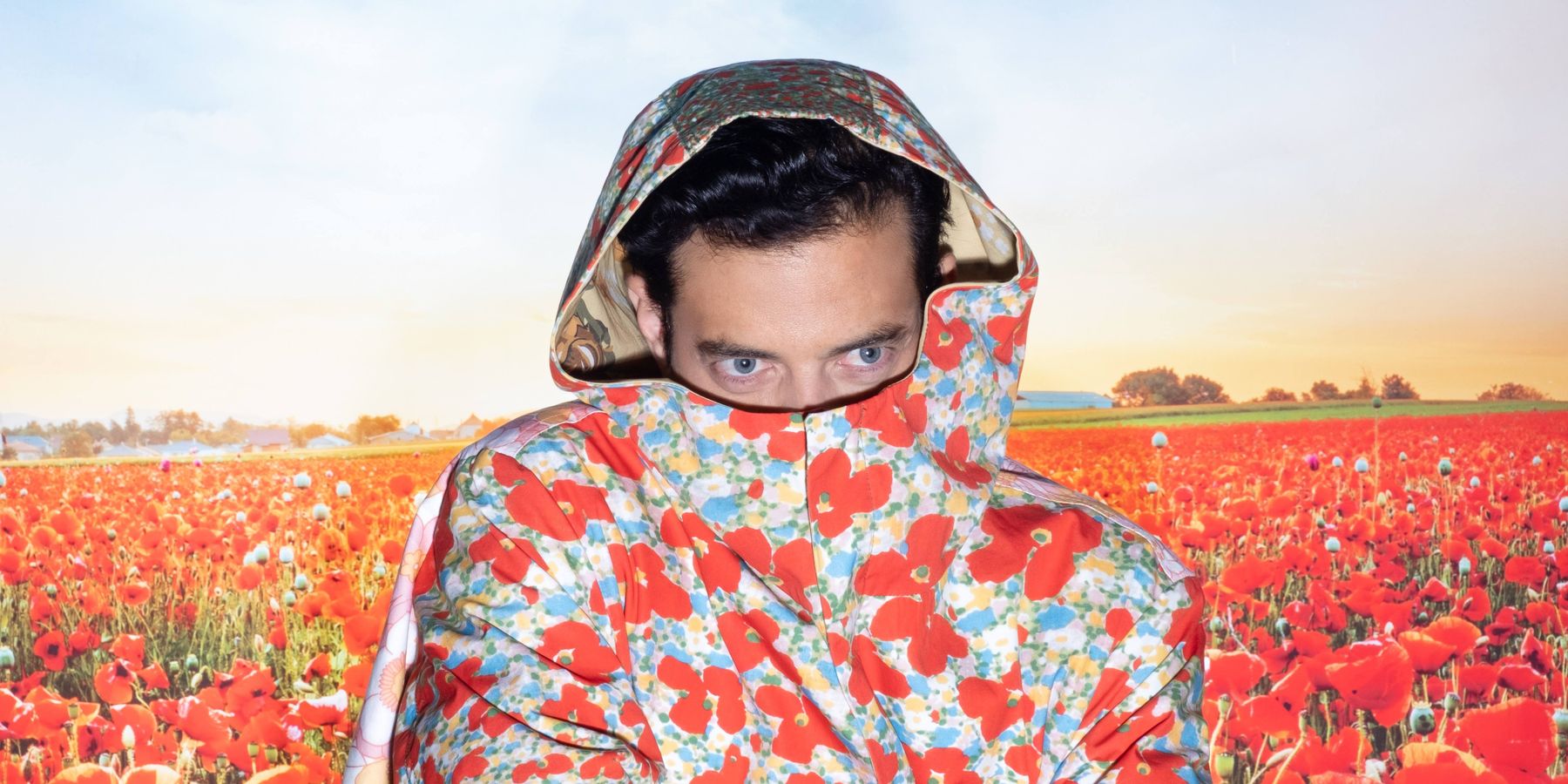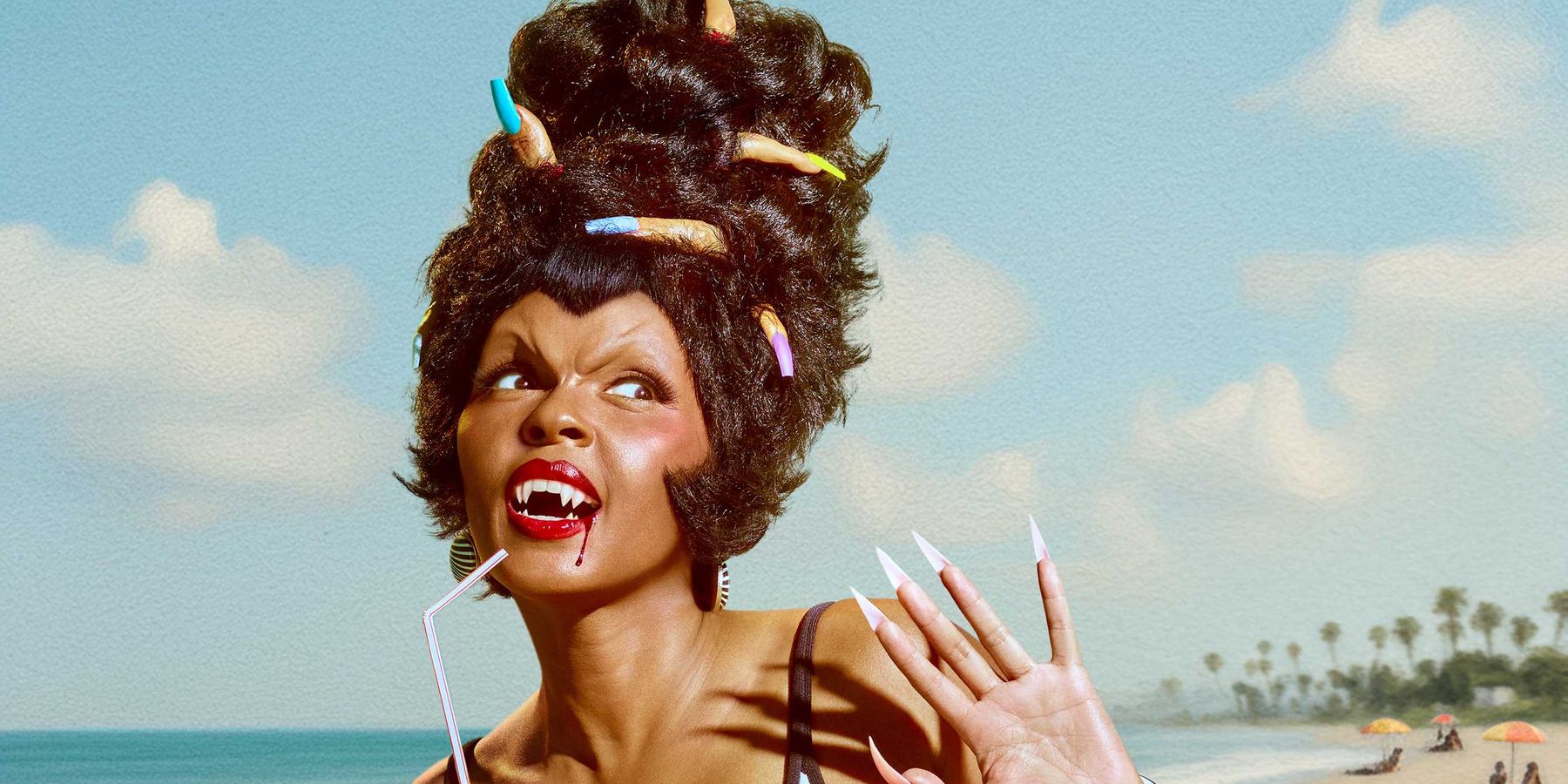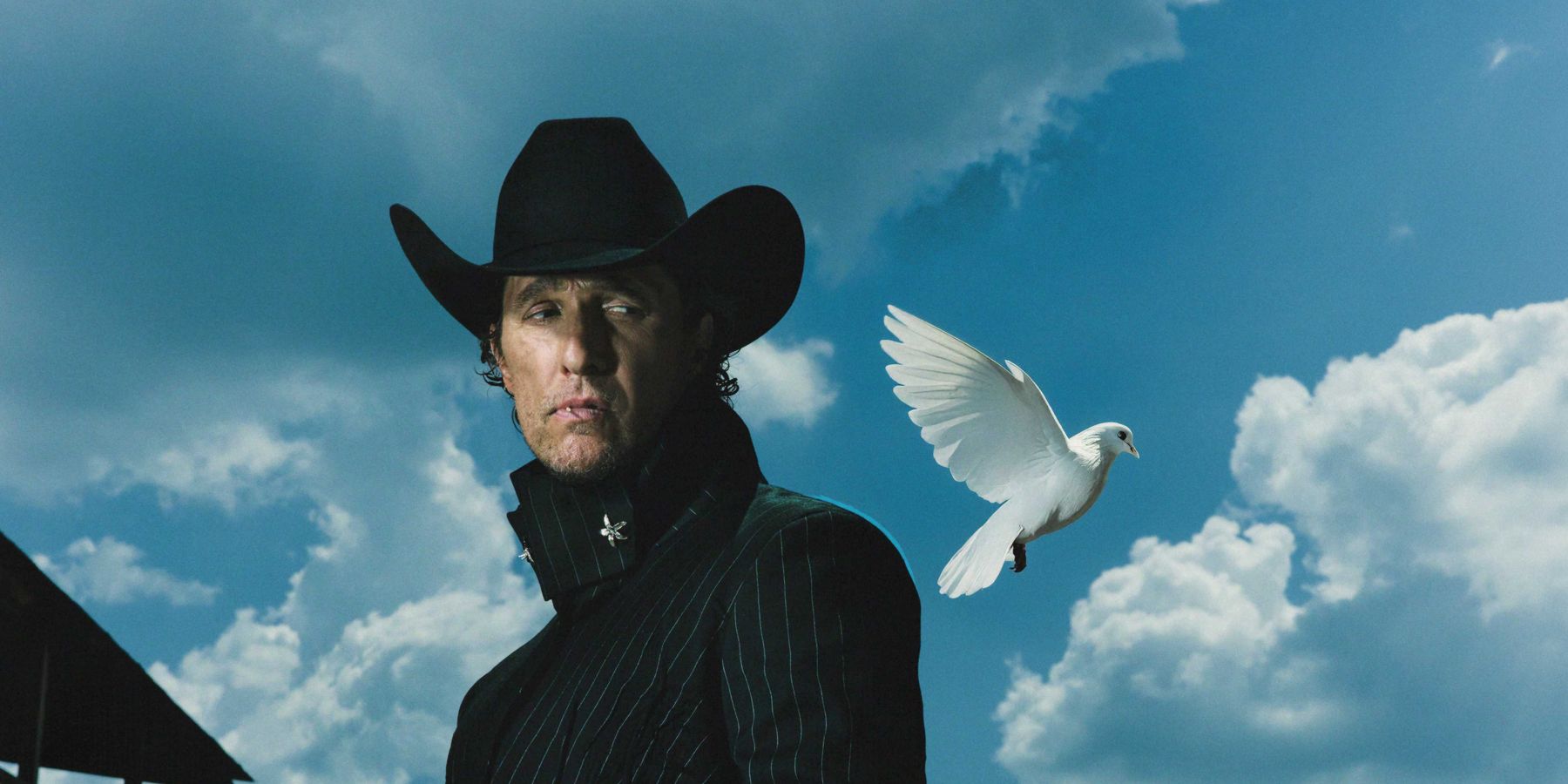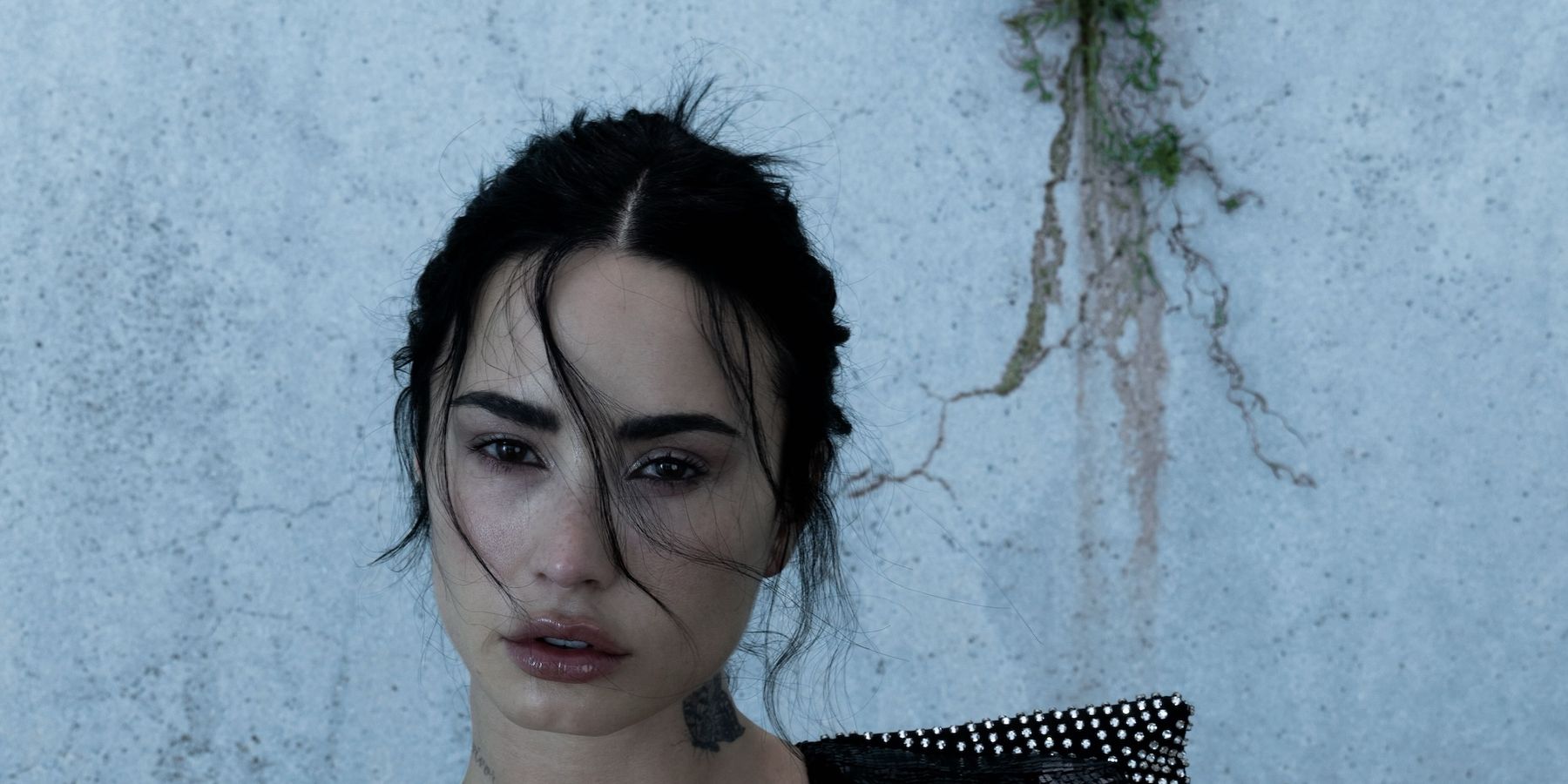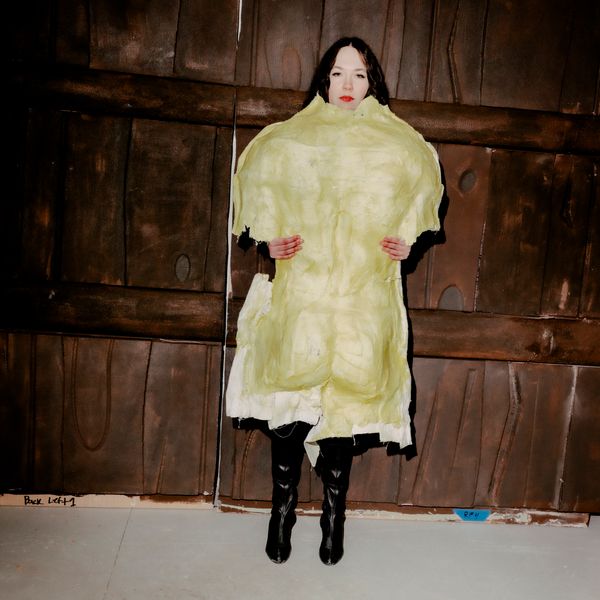
Isabelle Frances McGuire, American Dreamer and Nightmare Artist
Story by Harry Tafoya / Photography by Evan Jenkins
Feb 26, 2025
Since his assassination in 1865, Abraham Lincoln has achieved immortality as an American icon. He is regularly ranked the greatest President of all time and has become something of a Jesus figure for this country’s civil religion: a martyr for the Union, the man who ended slavery and a chin-bearded emblem of a by-your-bootstraps work ethic. But like all icons, Lincoln is also an incredibly vague character, someone whose example is so abstract and widespread he can be easily invoked for almost any agenda across the political spectrum. And then there’s the question of how to visualize him. He was one of the first Presidents to be photographed, but the portraits of him are so composed and dignified, they reveal almost nothing of his actual character. From moment to moment, did he more closely resemble the placid face of the Lincoln Memorial or the glitched out abstraction of Salvador Dalí’s Lincoln in Dalivision (1977)? Should we take Daniel Day-Lewis’ sober gravitas in Lincoln as his most accurate portrayal or Conrad Ricamora’s overwhelmed gay hysteria in Oh, Mary!? Was he a willowy twink or properly strapped? Apart from a few portraits and his profile emblazoned onto the (soon-to-be-obsolete) penny, there’s still a tremendous ambiguity about how to see him as a person and a figure today.
Isabelle Frances McGuire became fascinated with Lincoln upon realizing that he had deeply influenced their morality, without knowing exactly what that meant. McGuire is fascinated by mythologies of power, latching onto the recurring motifs of the stories we tell ourselves and scrambling them into a narrative slurry. Fact and fiction are so commingled in their work that you’re never entirely sure whether the myth you’re dealing with is their invention or ours. After initially studying and abandoning performance due to stage fright, they traded gleefully weird video art for animatronic sculpture that did all of the performing for them. Their biggest career highlight to date was their recent exhibition Year Zero at the Renaissance Society of Chicago. For it McGuire built a full-scale replica of Lincoln’s log cabin flocked by vampiric statues of Jesus, Santa Claus and a gaggle of female Frankenstein’s monsters. The result was an impressive — if slightly fucked-up — American Nativity as haunted by its own stories as it was enthralled by them.

Most of McGuire’s work is a form of caricature, taking characters torn from history books and 3D-printing them into fully-rounded, if slightly botched, new dimensions. The sculptor’s studies of Elvis, Napoleon, Karl Marx and Honest Abe himself restore some valuable perspective to Great Men who’ve been cast as “larger than life” by physically showing where their reputations have been air-brushed, sanded-down and obscured in a flattering light. At first glance, McGuire’s sculptures resemble factory rejects from Epcot’s Hall of Presidents. They are clumsy, misshapen, and have a waxy skin texture that falls somewhere between aged cheese and a junkyard mannequin. Whether fitted with jerky animatronics or splayed out on the ground like a corpse, one of the defining features of the Chicago artist’s work is its unnerving presence. Gaze deep into each piece’s blank, dummy eyes and notice them somehow staring back; look upon their lifeless bodies and start wondering if they’re actually holding in their breath.
These likenesses are rarely based on actual source material. McGuire is far more likely to use character modeling from video games and anonymous medical scans than straightforward documentary evidence. DIY techniques like “modding” and “kitbashing” ensure that McGuire's final result bears human fingerprints rather than a polished and perfect default.
Male subjects are often based on female models and staged in odd ways that give the impression they’re in drag. A piece recently on display at King’s Leap in New York cycled through four looks from Joan of Arc to Scream mask to blonde hair and huge tits. The initial illusion of breath becomes all the more unsettling when you learn McGuire’s mannequins were printed with a full pair of lungs in their chest.
Freud listed “wax-work figures, artificial dolls and automatons” as prime examples of the uncanny, inhuman doubles that undercut our sense of order by transforming the familiar into something deeply strange. But as freaky as McGuire’s art often is, the confusion they set out to inspire is more playful, slapstick and open-ended than spookiness for its own sake. Like Epcot, McGuire’s own mission is pitched somewhere between an amusement park and educational resource: prompting viewers with work that’s surface silliness gives way to deeper questioning. The point they make is that myths don’t fizz out overnight but recur again and again in familiar but slightly altered forms. The American Dream never dies but always reinvents itself, and McGuire is here to give it a funny and unsettling new shape.
PAPER spoke to Isabelle Frances McGuire about SpongeBob, Mike Kelley, Midwestern Emo and how to make museums more fully come to life.
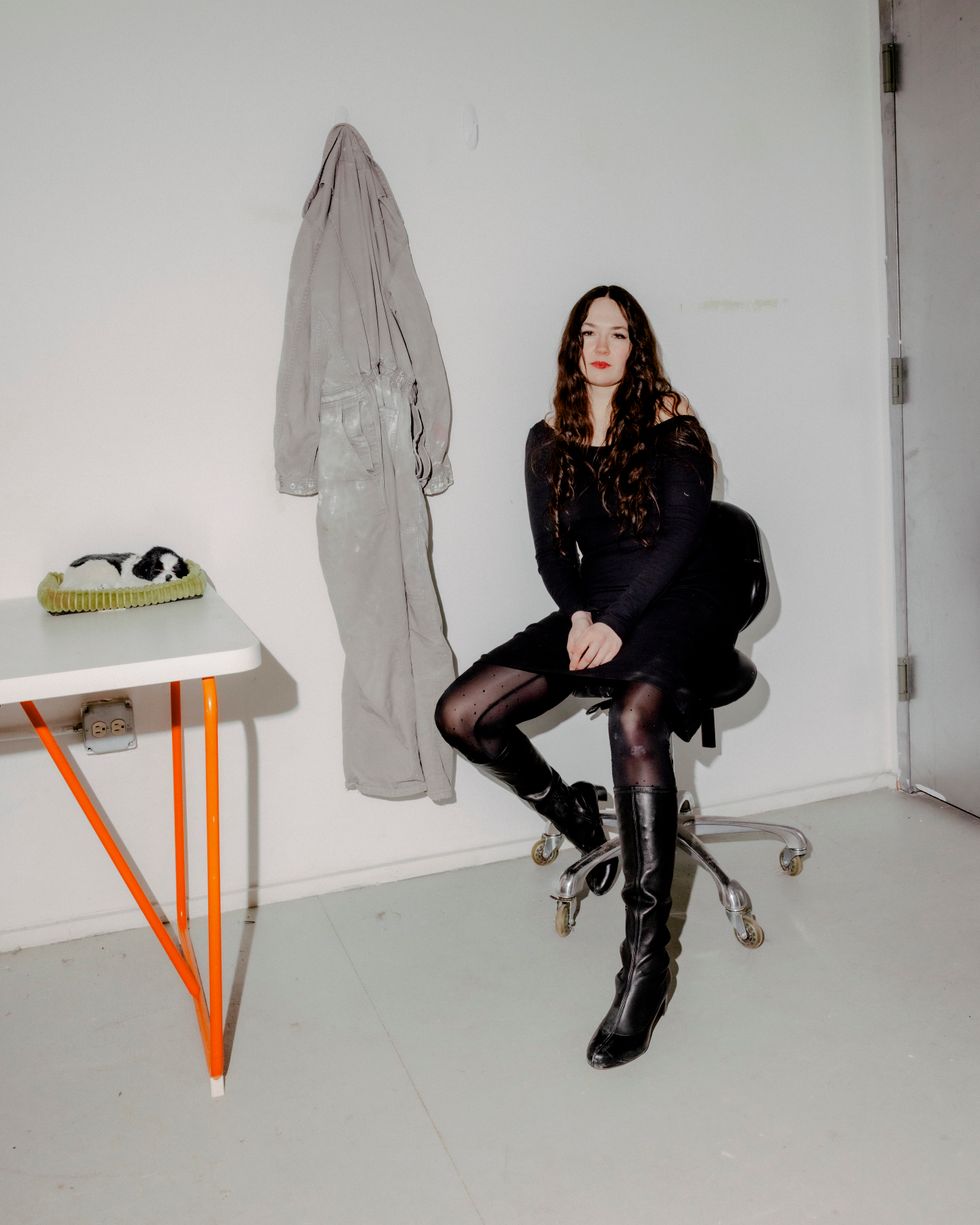
First things first: why Abraham Lincoln and why Jesus Christ?
Well I grew up in Illinois, I even went to Lincoln Middle School. But there was a moment in my life, probably three or four years ago, where I really began to investigate where my morality came from. I had become a very politically motivated person and was experiencing a lot of anger as a young person does when they just realize for the first time how awful things are. I had a very strong feeling that we should help each other, and when I looked deep inside, the figures that were propelling my action or my thought process were Jesus and Abraham Lincoln. Those were the two people that I was socialized on to act out righteous or good behavior. I kind of realized, Oh, I actually don't know that much about these people — and it’s been fun to explore because that is actually so abstract and there’s nothing concrete for me to hold onto what’s good or bad about them. They were just like tools that I was educated on. That became really interesting to me and opened me up to investigate these American characters that repeat [in culture] such as A Star Is Born or Call of Duty.
Did you arrive at a new way of thinking about Lincoln or Jesus while making the pieces?
Yeah, but I’m not necessarily trying to critique or challenge them. What I’m really trying to do is to create interesting art with them as symbols. And that's also why these became really good subjects for sculpture. My audience is immediately going to be familiar with these people, and then I can explore so many other things underneath this very iconic but also abstract image.
I was thinking about Abraham Lincoln recently, just because I went to go see one of the last performances of Cole Escola in Oh, Mary!...
Wow. How was it?
It was fantastic. But what I love about them and find very similar to your own work, is that you are both very loosely treading on mythology of Abraham Lincoln to very silly, verging on stupid ends with the absolute fullest commitment.
Yeah, absolutely. I definitely feel that what I'm always intending to do is to make something that's fucking stupid.
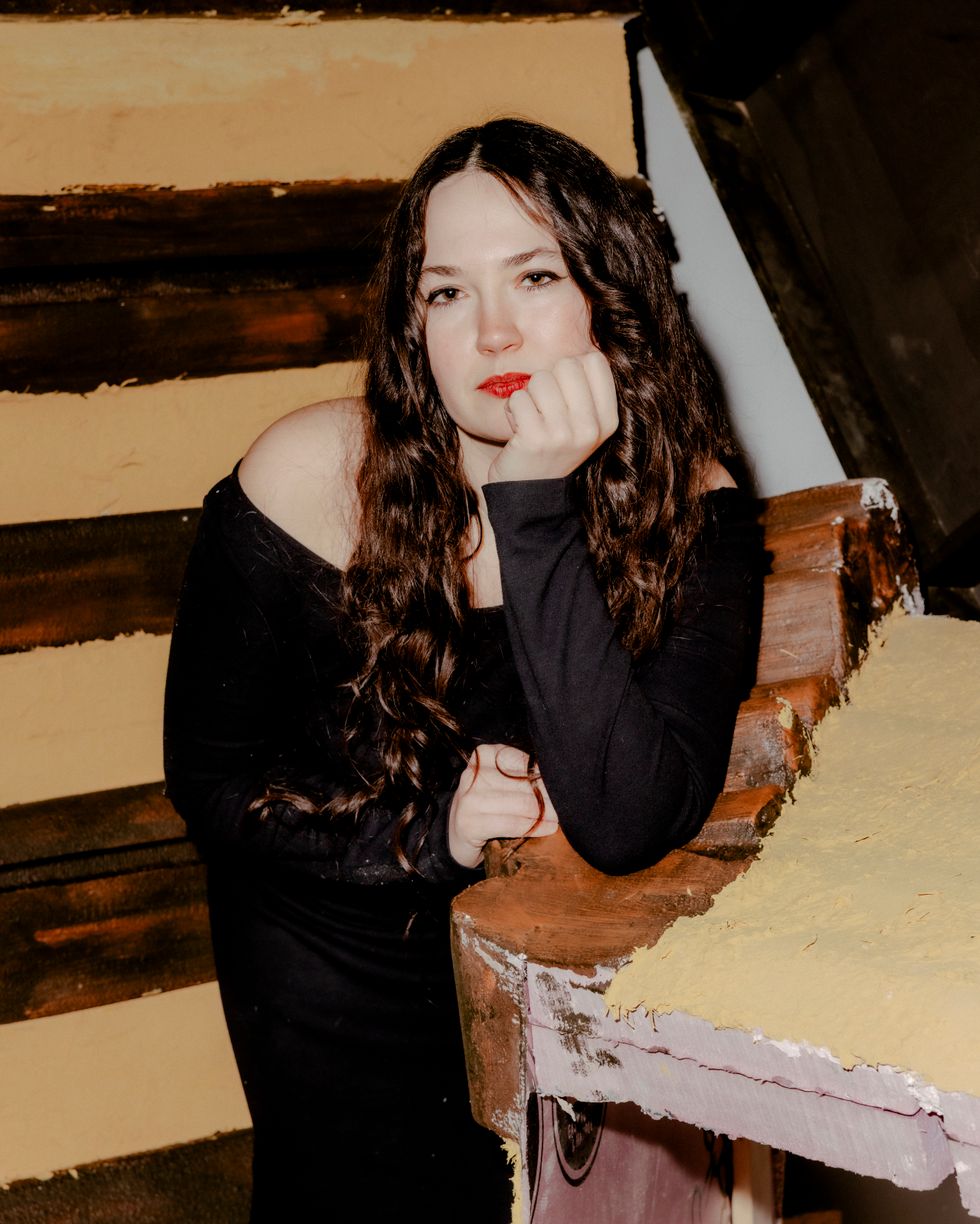
What draws you to the stupid?
I really do want people to feel immediately drawn into my work, but that there's still moments for other types of exploration to happen in the piece. I want people to stick around. I don't necessarily make things that are all that beautiful — I mean, I think they're beautiful — but they're more like caricature. They're in a joke realm. I want things to fall apart or feel a little bit silly or playful. I think that combination can really push it to this vibrant and idiotic level, and it makes it accessible and easier for people to talk about. If it's beautiful and doesn't look like a caricature, it can feel very much like we're not in this together. I'm just saying something at you.
My friend and I were recently talking about how SpongeBob Squarepants was both the silliest cartoon and still managed to introduce young kids to Nosferatu and glam rock and experimental culture in a very friendly and accessible way. I don't think that people's tolerance for silly things necessarily extends to a museum space and I was kind of curious what you thought about that.
I totally agree, a lot of times people just take me at face value. I also think a misunderstanding is totally acceptable and interesting in its own right. Do you know that one Paul McCarthy piece (“Tomato Head”) where it's a guy with a tomato head and has a long wiener that swirls around? It's funny because art people will walk into a room, see that and still have the same response of taking it seriously. But people who are not art viewers look at it and immediately think it's hilarious.
Totally. The other one that's kind of more applicable to you might be Mike Kelley's [famous exhibition] The Uncanny where you have these giant creepy stuffed animals that are meant to get you thinking about death and psychology.
He's a huge influence on me. It's a Midwest thing, I swear to god. That's like pure Midwest aesthetics and I just ran with it.
When I think about you and other Midwestern artists like Kira [Scerbin] and Shelley [Uckotter], you all seem to have a very particular regional weirdness to your work. What do you think is distinctly strange about the Midwest that you are tapping into?
It's almost like Midwest emo. This is really something that I might not even be able to answer because of how immersed in it I am, but I would say that everyone you've listed had been emo or scene at one point, and there's definitely an allure of dark, punky or goth culture in the Midwest. Darja Bajagić used to live in Chicago for a really long time and she went to Neo, this goth club, and filmed everybody. But you know, what's very funny about this is that not too many galleries in Chicago are willing to show art that is of this aesthetic. It's places like New York and California who might not have artists that are working within the same vein that actually exhibit it.
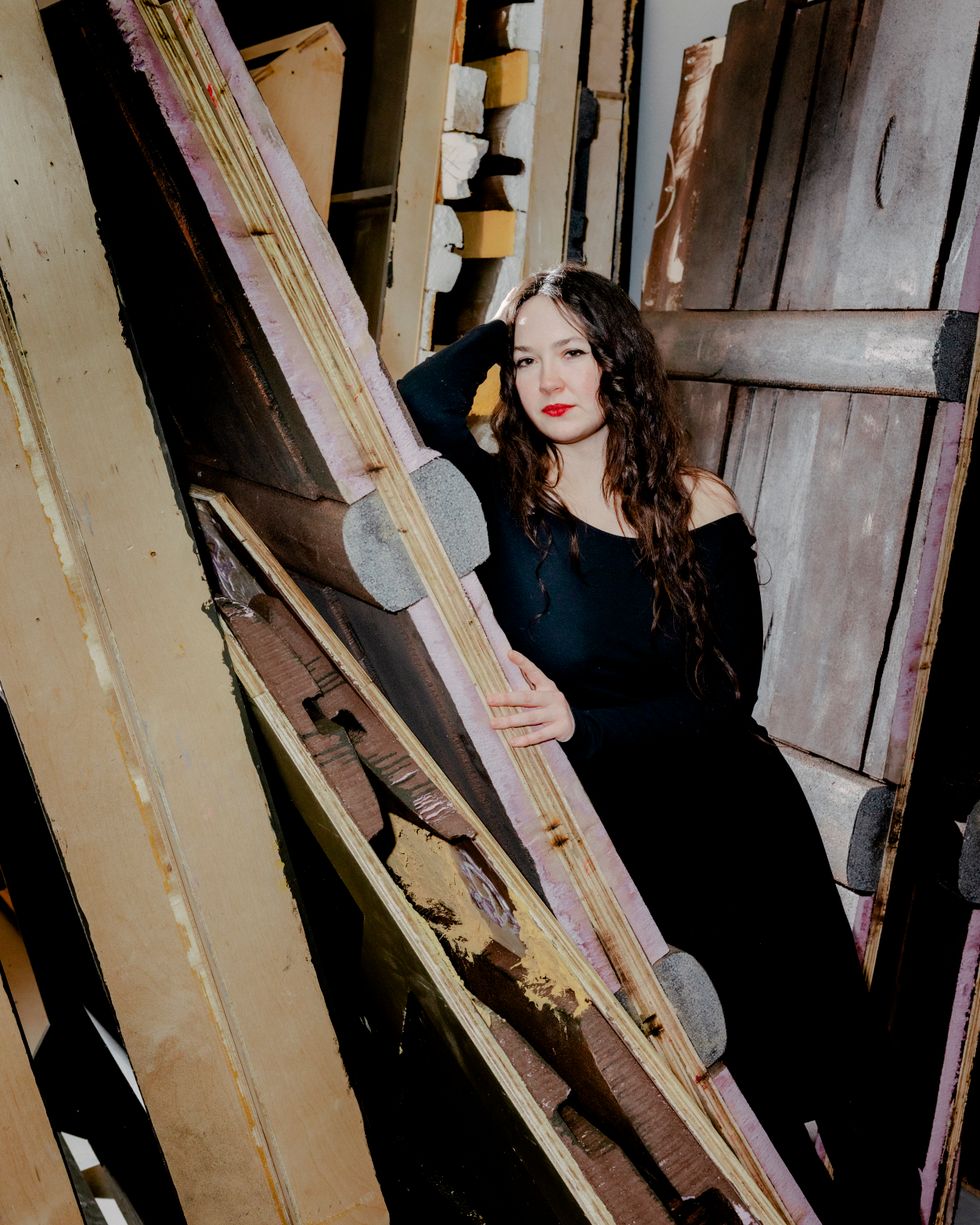
It's half IRL and tapped into a very regional kind of surrealism, but then it's also super online as well. Where do you think that those two strands of culture might meet?
As with most people, I personally spent my entire life online and was pretty obsessed with being on the internet from a really young age. But I would say that I don't have an answer to that. I really feel like this might just be something that I'm like, culturally entrenched in that feels not different from my natural way of operating or how I've been socialized. I don't know any other life.
That’s totally fair. I heard that it's actually colder than Antarctica in Chicago right now.
Yeah, it's fucked up. Maybe the reason why there's this Midwest emo or the internet thing is actually just because of how much time you spend inside and how much less pressure there is to be grinding constantly here.
I read that you had studied performance and still wanted to keep a theatrical edge to your work. Could you talk about that?
I did start off with video and performance, but I had stage fright and completely stopped doing it. I was really into queer performance and crush fetishes and very sexualized and fetish-y work. But I think that kind of contributed to the stage fright because it was too public and vulnerable. After my performance streak, I started making sugar glass sculptures, and one of my friends said that even though I’d stopped performing, my sculptures were still making action in time by falling apart and decaying in front of you. My sculptures then started to become animatronic and move through space in a different way as well. Because the cabin is a shell it kind of set the tone for the rest of the show.
Could you tell us about your 3D-print recreation of Lincoln’s cabin?
The image of [Lincoln’s log] cabin is so recognizable. It's just wood painted black on the inside. I was also thinking about the stripes from Juno the movie, so the cabin is striped a little bit more orange-y than it would be just because that was a reference point.
The name of the piece is “Symbolic Birth Cabin Unit,” which is just taken from the National Parks’ name of their replica cabin. But the inside is just black, and there's monsters all around it, so at some point the cabin becomes a haunted house. It feels empty, but also sometimes people feel very peaceful and calm there. I would say that everybody has a foreboding feeling right when they enter into this black space, but it’s interesting, because the sound changes from the outside to the inside of the cabin. The outside is very echoey but inside, because it's foam, it’s very padded and muted and I think that calms people.
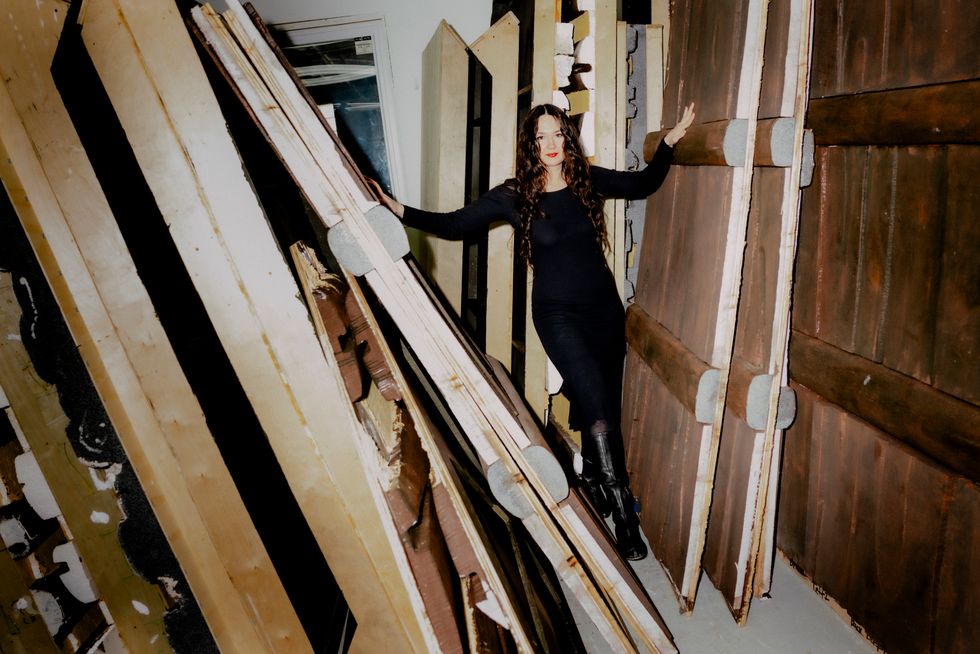
What is the thinking behind using these anonymous scans to depict these very iconic figures?
It comes out of this model research, which is a huge part of my practice. I've been using them in different ways through almost every show. To make figures like Abe Lincoln and Karl Marx, I used models from Abraham Lincoln: Vampire Hunter and Assassin's Creed. These models are supposed to exist in more of a brain space. The only scans actually based on people are the monsters. They came from a free medical site and you can’t really tell what country they’re from. Some of them seem dead, and it came out during COVID so I think it’s possible that these are CT models of people that passed during COVID.
To me, the figure of Abraham Lincoln is supposed to signal goodness, and then vampires are signaling badness. Their creation is also morally ambiguous, because who knows if these scans are of people who are dead or alive? Who knows if they gave consent? It’s impossible to tell their race or and sometimes their gender.
How do these fit in with the short film that accompanies the show?
The monsters come from a place called “the underground,” which is like a fictional zone in the show. That zone begins at what I've been calling the “basement of the Ren[aissance Society],” but it's not actually the basement of the Ren. It's like another basement in a different building, and that's where we filmed the video Frankenstein In the Underworld. The vitrines are also part of “the underworld.” It’s basically a museum joke about how objects in museums are dead and they’re no longer in use. And so that was the idea of the sculptures in the gallery, their podium comes in the same dimensions as the vitrines. So they're sleeping on their native soil, the soil from the underworld, because that’s how vampires must sleep.
That's a clever touch.
It's a whole entire structure built around the show, to make it feel like you're entering a place that has different logic or a different way of operating.
I like that, and I think it's funny, too, because what better way to make the museum not a dead place than to make it undead?
You know, it's like Night at the Museum, they all come to life at the end.
I just put two and two together, because I watched [the accompanying short film] Frankenstein in the Underworld, and I realized, “Oh, this is the sculpture that was up at King's Leap.” How does the underworld extend to New York?
This is actually funny for me, because I live in Chicago, and I'm not going to see that sculpture in person at the show. I'm only going to see it in images. So it still retains this almost mythic documentation of what has happened, which was the point of that video. Nothing is really going on, it's just like documenting an event. What happened in that space is, there is a monster there, and that's kind of how I think about this as well as that. I'm just generating more images for my myth of this sculpture.
I definitely feel that what I'm always intending to do is to make something that's fucking stupid.
Photography: Evan Jenkins
MORE ON PAPER
Entertainment
Rami Malek Is Certifiably Unserious
Story by Joan Summers / Photography by Adam Powell
Story by Joan Summers / Photography by Adam Powell
14 November
Music
Janelle Monáe, HalloQueen
Story by Ivan Guzman / Photography by Pol Kurucz/ Styling by Alexandra Mandelkorn/ Hair by Nikki Nelms/ Makeup by Sasha Glasser/ Nails by Juan Alvear/ Set design by Krystall Schott
Story by Ivan Guzman / Photography by Pol Kurucz/ Styling by Alexandra Mandelkorn/ Hair by Nikki Nelms/ Makeup by Sasha Glasser/ Nails by Juan Alvear/ Set design by Krystall Schott
27 October
Music
You Don’t Move Cardi B
Story by Erica Campbell / Photography by Jora Frantzis / Styling by Kollin Carter/ Hair by Tokyo Stylez/ Makeup by Erika LaPearl/ Nails by Coca Nguyen/ Set design by Allegra Peyton
Story by Erica Campbell / Photography by Jora Frantzis / Styling by Kollin Carter/ Hair by Tokyo Stylez/ Makeup by Erika LaPearl/ Nails by Coca Nguyen/ Set design by Allegra Peyton
14 October
Entertainment
Matthew McConaughey Found His Rhythm
Story by Joan Summers / Photography by Greg Swales / Styling by Angelina Cantu / Grooming by Kara Yoshimoto Bua
Story by Joan Summers / Photography by Greg Swales / Styling by Angelina Cantu / Grooming by Kara Yoshimoto Bua
30 September
Music
Demi Lovato Is No Joke
Story by Ivan Guzman / Photography by Jason Renaud / Styling by Chris Horan/ Makeup by Loftjet / Set design by Allegra Peyton
Story by Ivan Guzman / Photography by Jason Renaud / Styling by Chris Horan/ Makeup by Loftjet / Set design by Allegra Peyton
15 September
